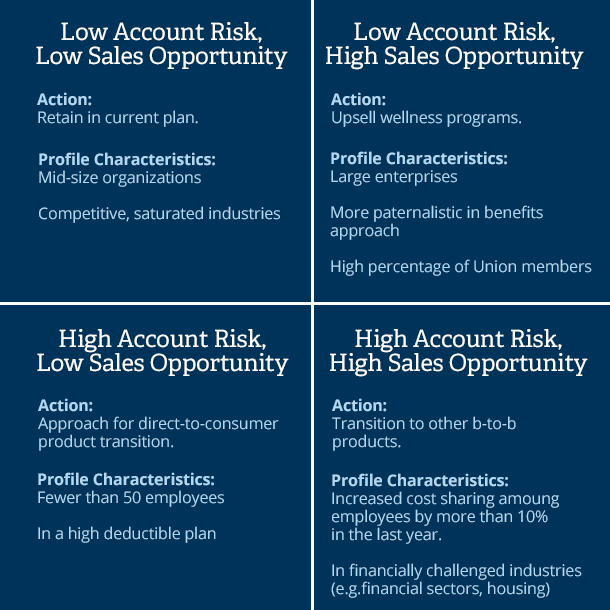Using Propensity Modeling to Identify Account Risk and Upsell Opportunities
We all want a way to better gauge which prospects are most likely to buy our products or services. When we think of propensity modeling, it’s most often in the context of rapid-entry pipeline programs and/or lead scoring efforts. Many healthcare organizations may also see great utility for propensity modeling with current clients as a way to identify potential upsell opportunity or quantify account risk, particularly given current market dynamics following the implementation of the Affordable Care Act (ACA). I suspect that many healthcare marketing leaders (particularly in the payer sector) will be dusting off their old statistics textbooks to help them develop a propensity model.
Propensity models can be of particular interest in understanding how employer clients will respond to their responsibilities under the ACA. In this scenario, the steps of the propensity modeling exercise are:
- Leverage known data in employer accounts (e.g. firmagraphics, risk tolerance, account history, paternalistic vs. laissez faire attitude)
- Identify known actions (e.g. transitioning employees to private exchanges)
- Isolate the data points that are most relevant causes of the known action
The resulting model would enable the healthcare marketer to develop a quadrant-based profile of accounts most likely to take certain actions.

Marketing leaders can use the output from the model to serve essential buyer roles by:
- Identifying opportunities or risk factors based on the output of the model
- Devising a notification mechanism to alert sales teams and/or account management of opportunities and risks
- Devising communication streams that anticipate client need and drive retention or transition strategies
- Ensuring sales that has the tools/training it needs to address potential opportunities (e.g. shift to new products)
Building a model of this kind may require several iterations – but the output will help set an effective path for ongoing client retention initiatives.